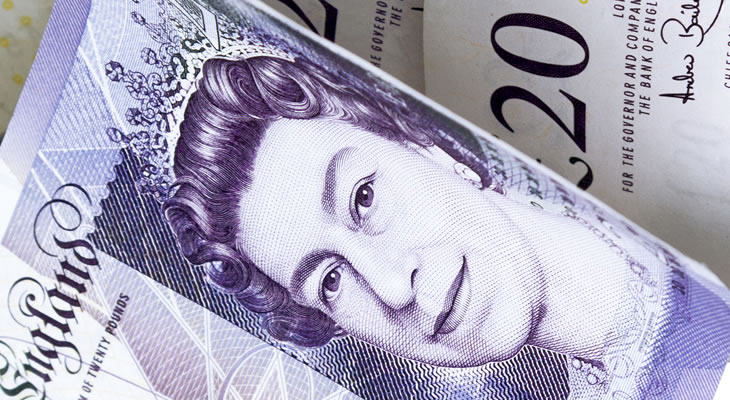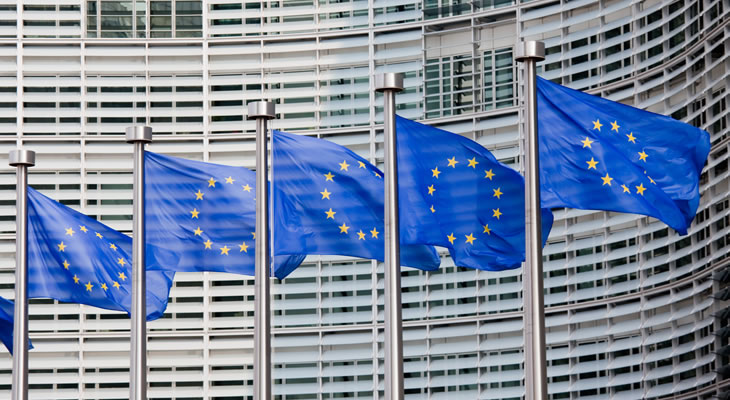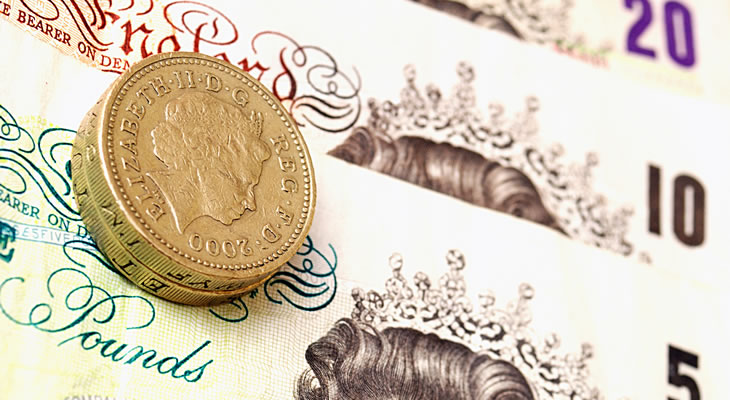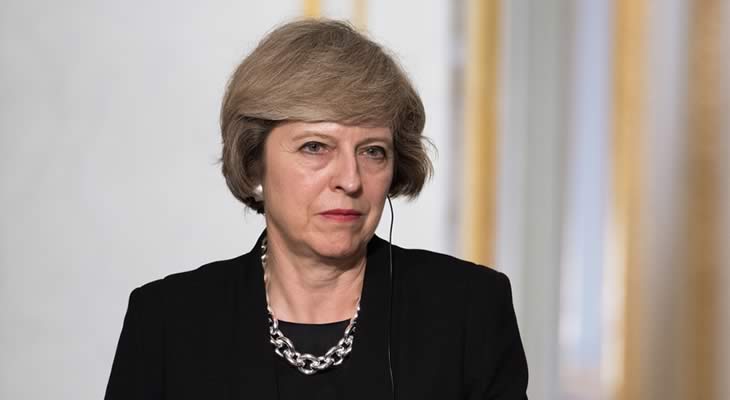Theresa May is set to give her long-awaited speech on Brexit imminently. The potential for her to announce a ‘Hard Brexit’ has seen GBP exchange rates collapse over the last few days. Let’s take a more detailed look at why and how ‘Hard Brexit’ talk affects the Pound.
Pound Volatility Continues as Correctional Trade Supports Recovery
Closing Update, 19th Jan; The Pound has continued to strengthen today, despite news Goldman Sachs has halted plans to move some of its operations to the UK. The bank blames the uncertainty surrounding Brexit for the decision.
Afternoon Update, 19th Jan; The Pound is continuing to notch up the gains today, despite the news that Goldman Sachs has put the brakes on plans to relocate some of its key operations to London from the US. Citing the uncertainty surrounding Brexit, Goldman Sachs has become the latest bank to indicate jobs will be lost in the City, after HSBC and UBS warned in Davos that jobs may have to be moved to Europe.
Midday Update, 19th Jan; The Pound continues to hold gains following Theresa May’s speech to Davos today. The Prime Minister has failed to particularly move markets today with her address to the World Economic Forum’s (WEF) annual meeting, but her comments that Brexit Britain will be a ‘global Britain’ are sure to help sooth fears.
Morning Update, 19th Jan; Pound exchange rates are continuing to experience significant volatility, with GBP rebounding from yesterday’s sell-off. The latest house price data hasn’t put a dent in the correctional trading, despite showing a weakening net balance of surveyors expecting to see house prices rise.
Profit-Taking Lowers Pound – Did Closing Short Positions Aid GBP Rally?
Closing Update, 18th Jan; The Supreme Court will deliver on Tuesday its verdict on the UK government’s appeal against a decision by the High Court that Parliament needs to approve the invocation of Article 50.
Morning, 18th Jan; Investors are selling the Pound today to profit from the significant gains made yesterday; nearly 3% against the Euro and the US Dollar for starters. Yesterday saw GBP rocket, which could be in part because investors rushed to close short positions.
Traders betting the Pound would weaken further on the likelihood of a ‘Hard Brexit’ were caught out by suggestions of continued free trade and partial membership to the customs union. These investors, who have sold Sterling borrowed from a broker in the hope the exchange rates will worsen and they can buy it back for cheaper, are now faced with higher exchange rates and, therefore, the prospect of making heavy losses.
So these traders may have rushed to buy back Sterling before it appreciated too far, accepting small losses in favour of larger ones further down the line. This demand for the UK unit would have aided the Pound’s appreciation.
However, the reaction of EU leaders and media to the speech has somewhat soured investor positivity. The leader of the EU negotiations, Guy Verhofstadt, has described the twelve aims cited by Theresa May as amounting to an ‘illusion’.
Update; Pound Soars as Theresa May Offers Brexit Reassurances
Theresa May has now finished her Brexit speech. Most of the negatives were already known in advance, limiting the damage to the Pound from the news the UK is heading out of the single market. However, May has claimed she wants some form of access to the customs union to ensure free trade with the EU.
May stated;
‘We do not seek membership of the single market. Instead we seek the greatest possible access to it through a new, comprehensive, bold and ambitious free trade agreement.‘
She also promised to protect farming subsidies and suggested the UK could make minimal payments to the EU in order to have access to certain programmes. This could be a reference to the passporting of financial services, or an equivalent arrangement, which would spare the UK’s thriving financial sector from a potential squeeze following Brexit.
It seems that many EU leaders have welcomed the clarity provided by May in her speech. The general feel of comments so far seems to be that her goals are roughly in line with what the EU was expecting her to ask for, suggesting the negotiating process might be much smoother than had been feared.
Her claims have seen GBP exchange rates surge, with GBP EUR up 1.8% and GBP USD up 2.7%.
Keep reading the original article below to learn more about the effect Brexit speculation has had on GBP exchange rates thus far…
What is the Difference Between a ‘Soft Brexit’ and a ‘Hard Brexit’?
So what exactly are the different types of Brexit on offer? Markets – and many politicians and business leaders – would prefer a ‘soft Brexit’. This means the UK leaves the EU, but remains a part of the single market. This may involve some form of contribution to the EU budget each year; economists argue this is still worth our while, as it gives us tariff-free access to over 500 million customers.
A ‘Hard Brexit’, on the other hand, involves a complete break from the EU, including the customs union and the single market. The UK would have to negotiate a fresh trade deal with the EU, but would be unlikely to secure tariff-free access to the single market; no country has access to the single market without also accepting freedom of movement. This would leave the UK free to negotiate trade deals with other nations, forging links to potentially lucrative markets.
How Have Investors Responded to the Idea of a ‘Hard Brexit’?

It is very clear from the movement of the Pound since the referendum that, regardless of their political bias, investors largely want a ‘Soft Brexit’. This is the option that best preserves the status quo, curbing market volatility and protecting their investments from excessive risk.
There are many examples where rumours of a ‘Soft Brexit’ have boosted the Pound, while suspicions of a ‘Hard Brexit’ have weakened it. The clearest example is to look at how quickly GBP exchange rates have shed the gains made during several weeks of recovery on the latest indication the UK government intends to press for a clean break from the EU.
A combination of striking a post-referendum low in October – due to an anomalous ‘flash crash’ – and strong demand in the wake of Donald Trump’s shock US election victory boosted the Pound between mid-October and the year-end. On a trade weighted basis, GBP climbed from its post-vote low of 73.72 to 79.04 by the middle of December. Before the referendum, trade-weighted Sterling had hit 87.76.
However, December’s Bank of England (BoE) monetary policy meeting revealed that, despite strong economic performance, above-forecast inflationary growth would not necessitate an interest rate hike set Sterling back on a downtrend.
This decline seemed to have ended at the beginning of January, but comments from Prime Minister Theresa May quickly set GBP exchange rates tumbling again. In her first television interview of the year, the Prime Minister told Sky that she was not interested in keeping ‘bits’ of the UK’s membership to the EU. Interpreted as a sign a ‘Hard Brexit’ was on the way, this weakened the Pound.
It was not the last the markets would hear from the Prime Minister over the following weeks weeks. Theresa May later commented that immigration would remain the government’s priority; another sign that she would pursue a full break from the EU, as many officials from the Union have repeatedly stated there can be no single market access without freedom of movement.
Theresa May is shortly to begin her much-awaited Brexit speech, in which she will supposedly lay out the government’s key aims and strategy for the negotiations. However, GBP weakened yesterday as newspapers reported that the PM would announce her intention to take the UK out of the customs union and European Court of Justice, as well as the single market.
From its December high, the GBP trade weighted index (TWI) has now dropped to 75.96; a -4.5% weakening.
Does the Pound have Further to fall on ‘Hard Brexit’ Fears?

There are two reasons why there could be further Pound depreciation on the cards should Theresa May confirm a ‘Hard Brexit’.
Firstly, the Pound has recovered somewhat this morning after the latest UK inflation data showed a stronger-than-expected acceleration in December. Month-on-month price growth was expected to tick higher by ten basis points to 0.3%, but instead clocked in at 0.5%. Year-on-year inflation was predicted to climb from 1.2% to 1.4%, but surprised at 1.6%, while core inflation – expected to hold at 1.4% – rose to 1.6% as well.
This has once-again seen investors hoping the Bank of England (BoE) will be forced to tighten monetary policy in order to reign in price growth. This is providing Sterling with some temporary support ahead of Theresa May’s Brexit speech. Having risen off recent lows, GBP exchange rates therefore have room to fall again.
Secondly, traders have still not yet fully priced-in a ‘Hard Brexit’, according to market analysts. GBP exchange rates are still above their October lows, with many predicting that the Pound could strike a new post-referendum low once all hopes of single market access have been extinguished.
Could Theresa May’s ‘Hard Brexit’ Plans Change?

While this speech could been seen to cement once-and-for-all the type of Brexit the UK is aiming for, this may not actually be the case. Theresa May still has to await the result of December’s Supreme Court hearing. The government appealed a High Court ruling that stated the government must seek Parliamentary approval before triggering Article 50 and beginning the exit process.
If the Supreme Court upholds the initial ruling, as the government is allegedly expecting to happen, this could stymie May’s plans for a clean break from the EU. MPs would have to vote on the bill to trigger Article 50, but with most having supported ‘Remain’ and many vocally in favour of single market access and close ties with the EU, there is a chance they may refuse to allow Brexit to begin under May’s terms.
There is little likelihood that MPs will vote to block Brexit entirely; many ‘Remain’ supporters have voiced their respect for the result of the referendum and their determination to uphold democracy. However, it is more likely that lawmakers will force the government to amend the Brexit bill to include promises that the UK will stay in the single market. Theresa May, in her upcoming speech, could downplay the potential for her plans to be drastically altered, but the potential nonetheless remains.
GBP Exchange Rate Forecasts; Bearish Pound Likely, but Recovery Not Impossible

If, as is expected, Theresa May confirms her intention is to pursue a ‘Hard Brexit’, Pound Sterling will likely return to this week’s lows, or potentially even fall to a new post-referendum low.
There is always the outside possibility that the Prime Minister may offer some form of assurance, however. It all depends upon how detailed her plans are; if she can show viable alternatives to single market access and convince investors of their financial liability, the Pound could rise as investors begin to see the advantages of a ‘Hard Brexit’, rather than just the negatives.
Theresa May could also signal that the UK will attempt to seek a transitionary deal, which could give businesses several years to prepare for a full withdrawal, while allowing the UK to negotiate trade deals to be ready to commence the moment the country’s EU membership officially ends. This would go a long way towards diffusing investor concerns.
Providing Theresa May offers enough clarity to provide a solid picture of what the government is aiming for, GBP exchange rates could improve thanks to the dissipating market uncertainty. Regardless of the type of Brexit, what business leaders have found particularly troubling is how unknown the future will be. Even if a ‘Hard Brexit’ is confirmed, the fact that businesses will be able to prepare for the eventuality will minimise the risks to the UK economy, therefore improving the outlook and buoying the Pound.


Comments are closed.